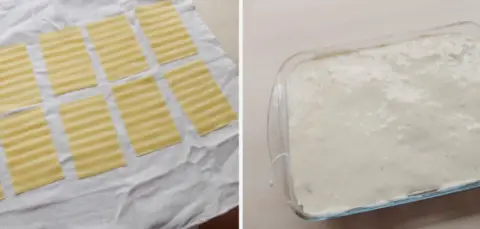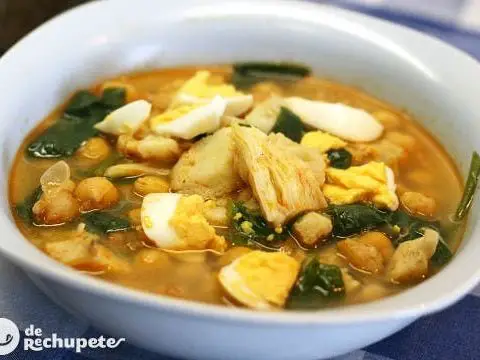
Info.
- Easy
- 100 minutes
- For 4 people
- € 1.5 / person
- 310kcal per 100g.
How to prepare Galician white broth with cabbage . I have been lucky enough to be able to bring me from Galicia this weekend all the ingredients to make this broth recipe and prepare it just as my grandmother did in town.
This recipe with what was in the garden is a variation of the classic broth with turnip tops, very similar to Gloria’s humble broth .
In turnip season, turnip greens or collards are usually prepared with these vegetables, but at home they triumph with white cabbage. We call it white broth because there is a light broth that is only out of place for a few carrots that my grandmother added to the broth.
A simple dish, from humble people, who gave him what he had, sometimes with a few white beans and another not. It is a homemade adaptation that looks amazing and that brings back a lot of memories. A hot broth for dinner is the best thing that enters the body to take temperature, although I assure you that the Galician broth is taken throughout the year, even in August.
This broth has some meat, a little chorizo, a piece of ear and a tail of pork. Like Galician stew and Galician pot, it is common that there are variations with certain ingredients that are used to a greater or lesser extent.
Some cheeks, a touch of daub, some beans (or the vegetables of the season), meat (veal and pork), a good piece of smoked Galician chorizo and seasonal vegetables. Usually turnip greens, turnip greens, collards, or white cabbage. Don’t panic, today’s recipe, as far as it goes, is much lighter.
Before cooking the Galician broth. Beans and meat.
- As I have bought some dried white beans, vacuum packed, it is necessary to soak them the day before, the day before. At least they should be about 10-12 hours in warm water, with a handful of salt, and that completely covers the beans.
- Before starting with the recipe, the water passes to remove impurities, and incidentally we check if there are any damaged or too hard beans. In this way we will avoid encountering it in the broth.
- If we are going to give the broth more consistency, we put the salted pork parts to soak: ear and tail. Changing the water at least once (as in Galician stew ) .
- Before starting, drain the ingredients well and reserve. We put a large saucepan with water on the fire, about 5 liters approximately.
Preparation of the white cabbage broth
- We put the white beans in a saucepan with cold water, soak them for about 12 hours.
- Add the beans that we had to soak, the chorizo, the meat and the anoint. We leave to cook over medium heat for an hour, foaming occasionally.
- Peel the potatoes and carrots. We cut the potatoes into cubes, flakes or laminates, as you like. I usually cut carrots into thin slices. Everything is added in the absence of 15 minutes of the final cooking of the broth, that is, when the broth takes about forty minutes to heat.
- Once the cooking time has passed, we remove the meat and the chorizo and reserve.
- We wash and chop the vegetables, in this case I have used white cabbage. We add it to the cooking water with the potatoes and cook for about twenty more minutes.
- It is time to taste salt and see if you need it, although it is not usually necessary because the meat already has salt. They provide a point of salt that has not been removed from everything in the previous soak.
- Chop the meat and chorizo into small pieces and introduce into the broth. We remove to put everything together. We give the final touch with a splash of extra virgin olive oil and that’s it.
When you are going to take it, heat it until it is steaming hot and serve it in a clay cup or bowl with a good piece of Galician bread, as it is eaten in my village. Delicious!
You can see all the photos of the step by step in the next album.






